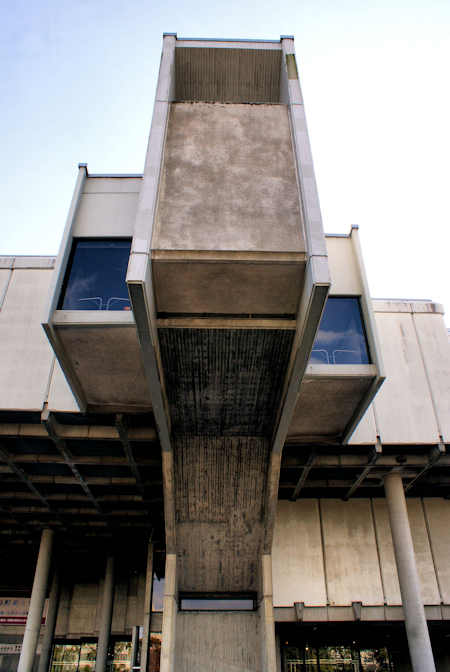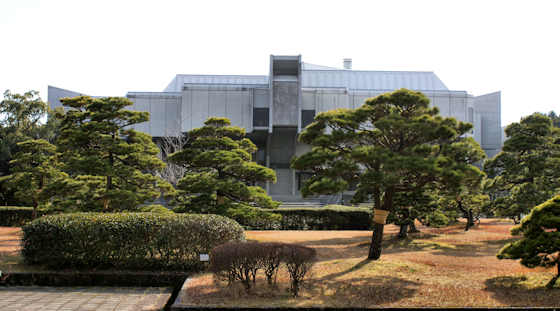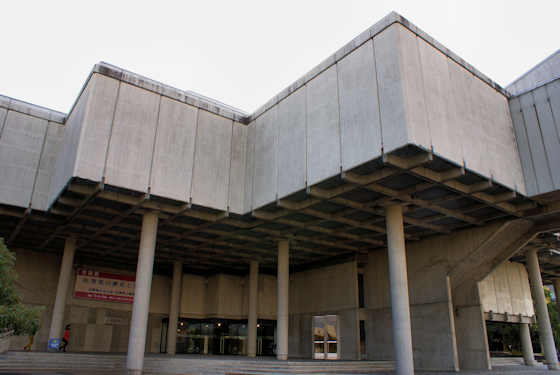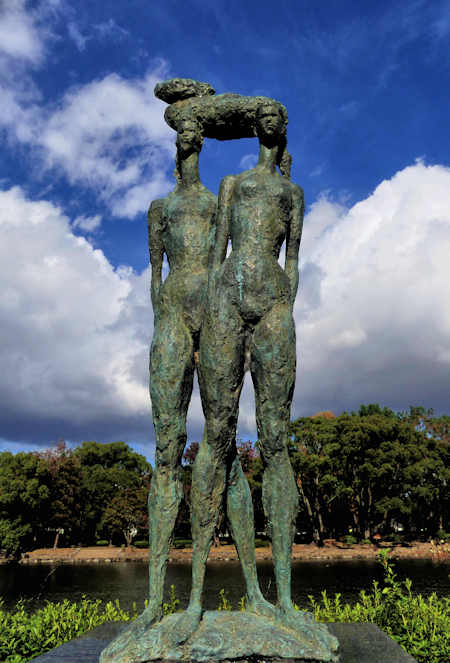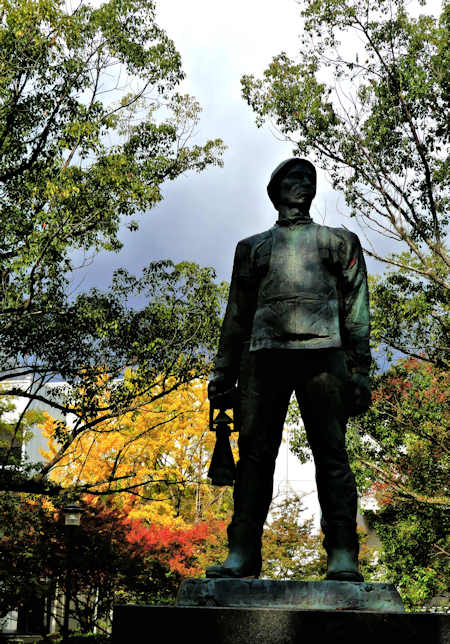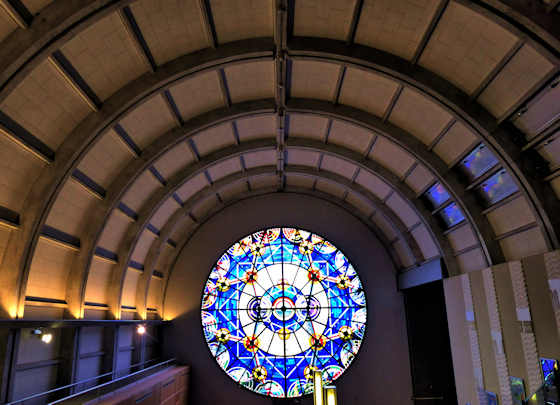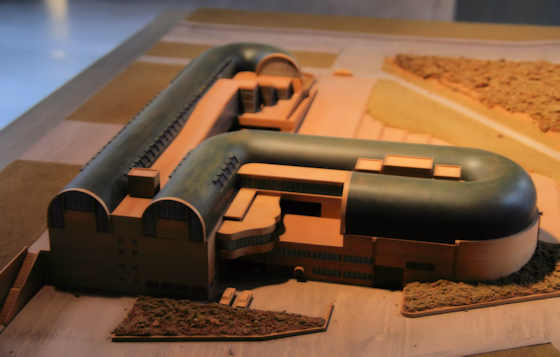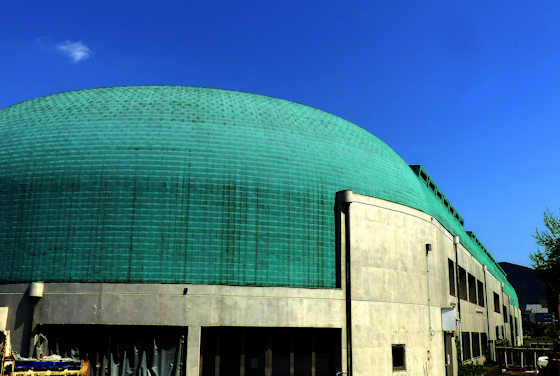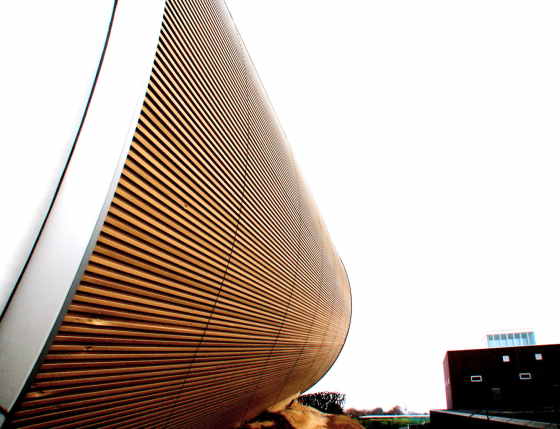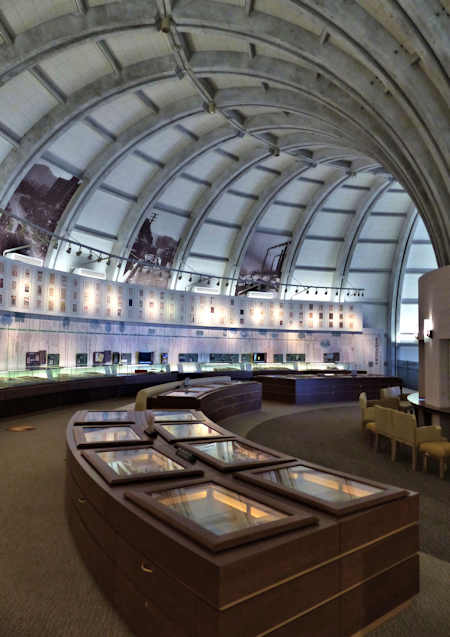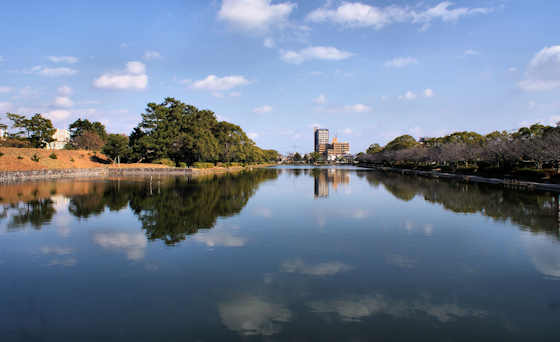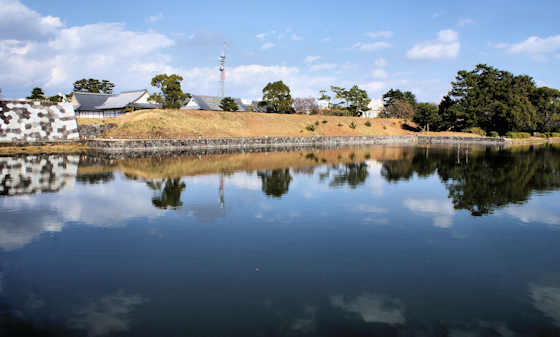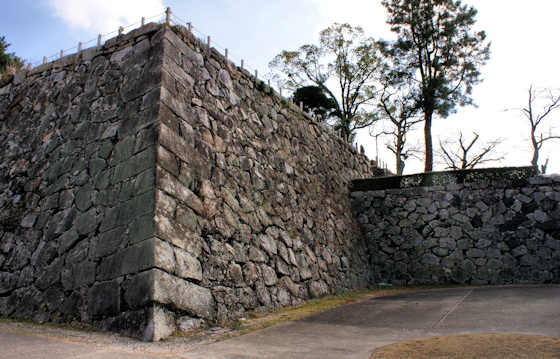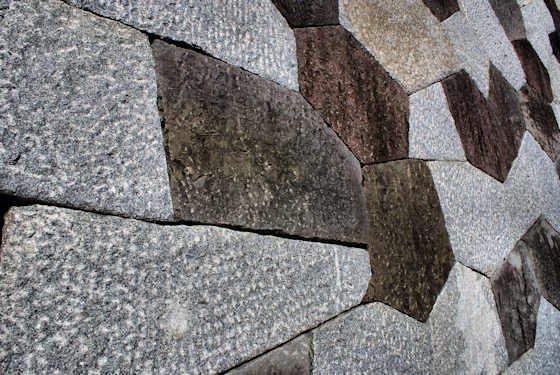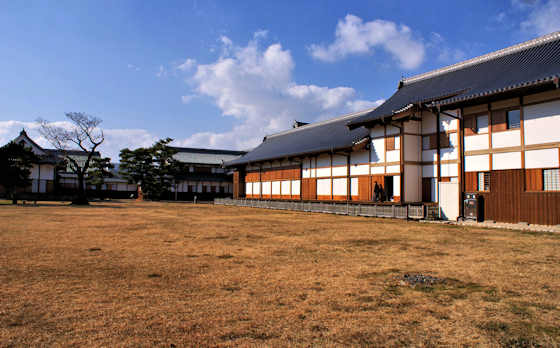Saga Prefectural Museum
Located within the moats of the former Saga Castle, and adjacent to the reconstructed Castle Palace, is the Saga Prefectural Museum.
It opened in 1970 and in 1983 the Prefectural Art Museum was opened next door and is connected by a passageway.
It was designed by architects Teichi Takahashi and Shoya Uchida, two architects that I not heard of before. At the time I'm sure it was classed as a "Modernist" design, though now it is more likely called Brutalist.
The displays cover archeology & History, Geology and the Natural Sciences, and folklore. Many items dug up from the Yoshinogari site are on display. Entry is free except for special exhibitions.
Outside the museum is the Tadao Koga Sculpture Forest.

